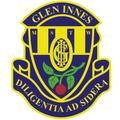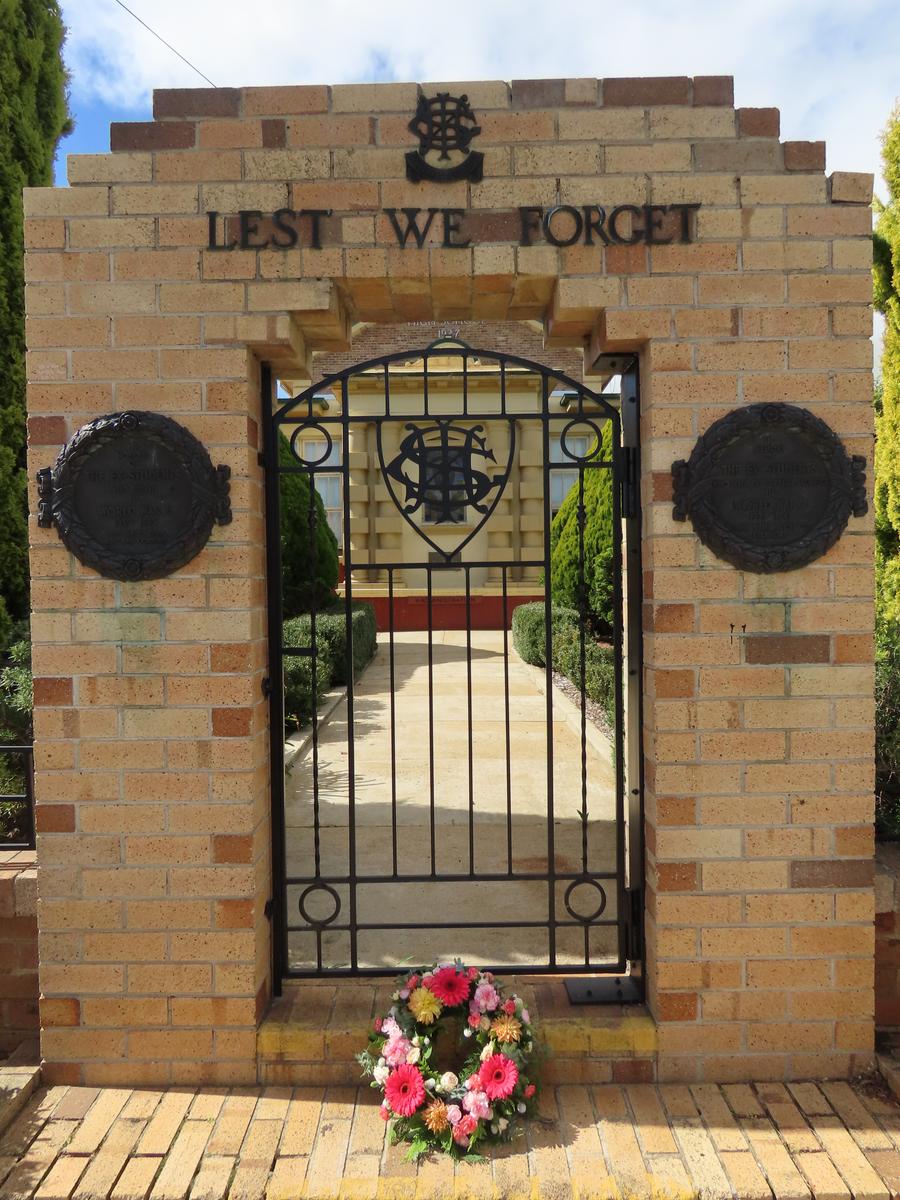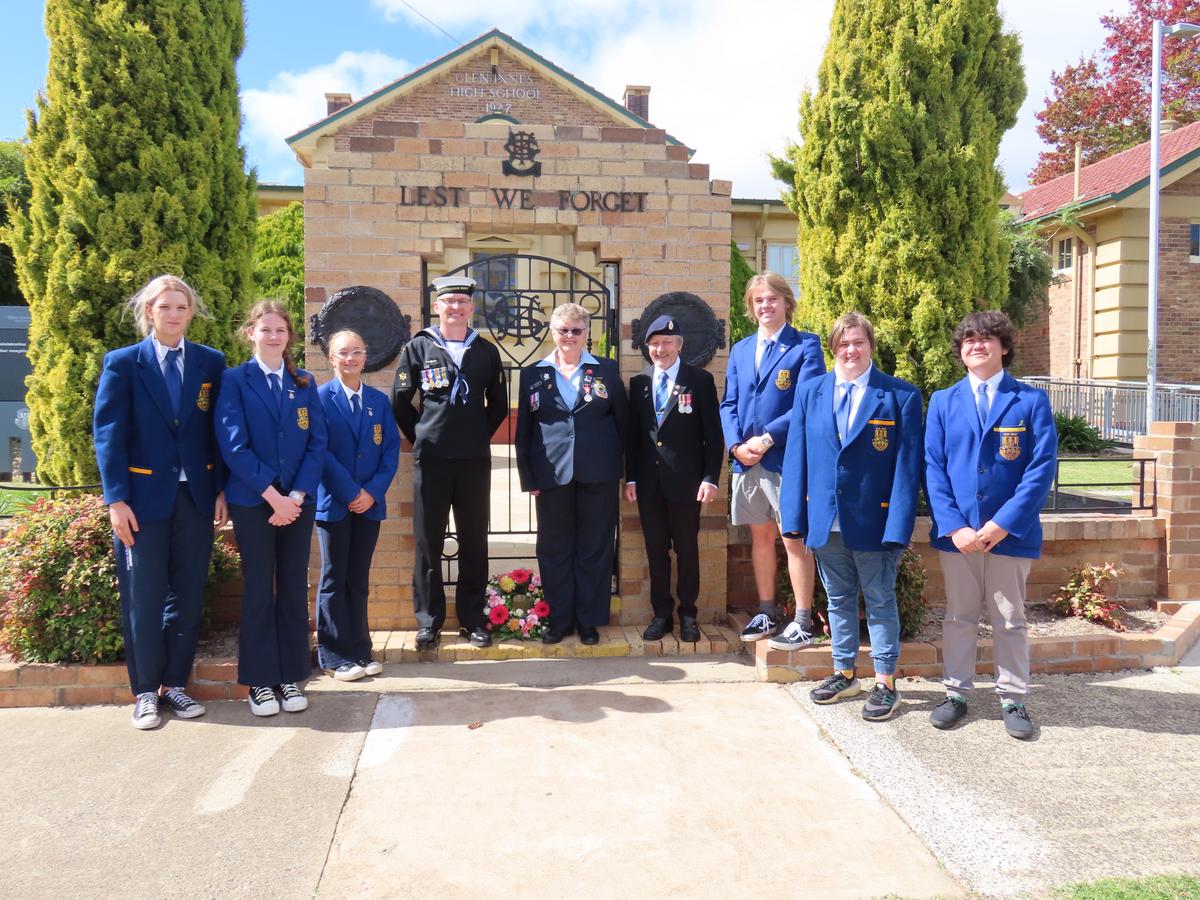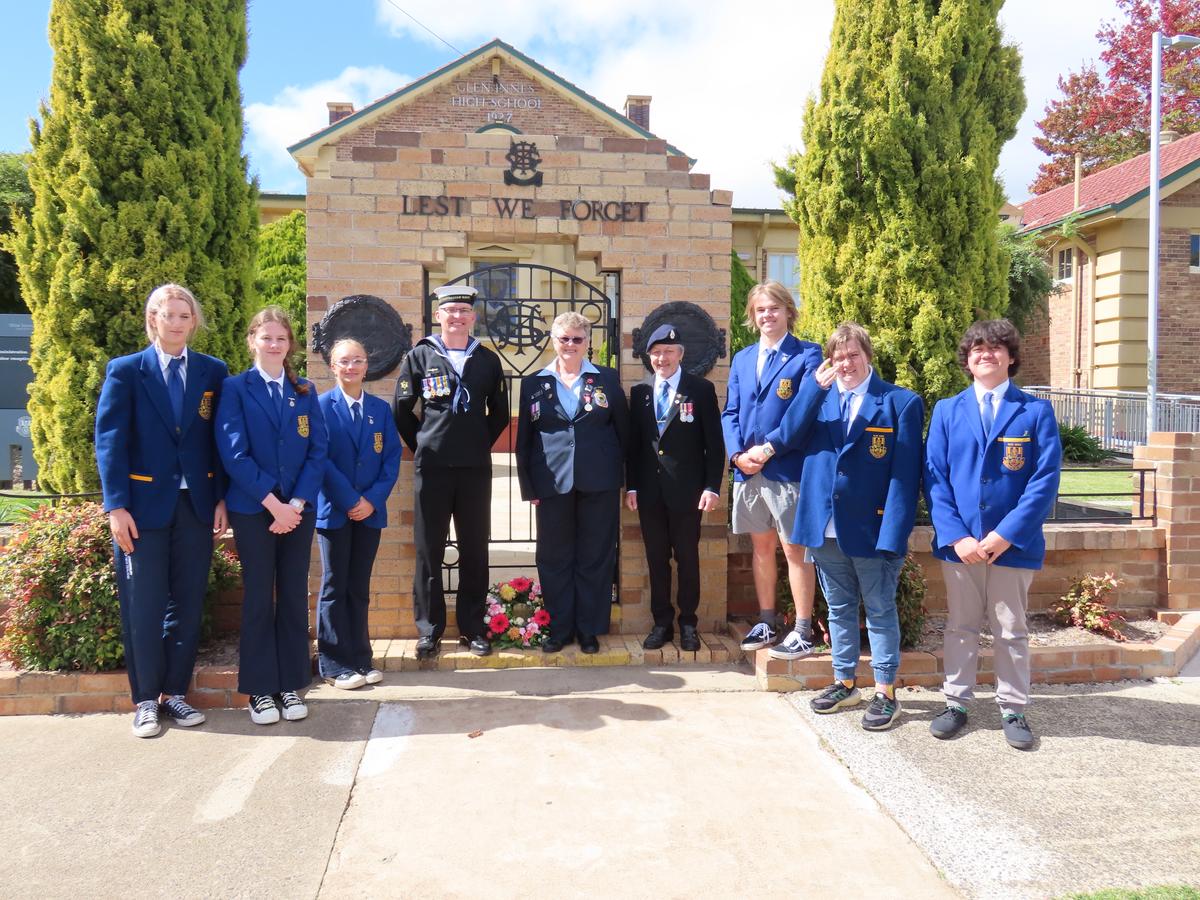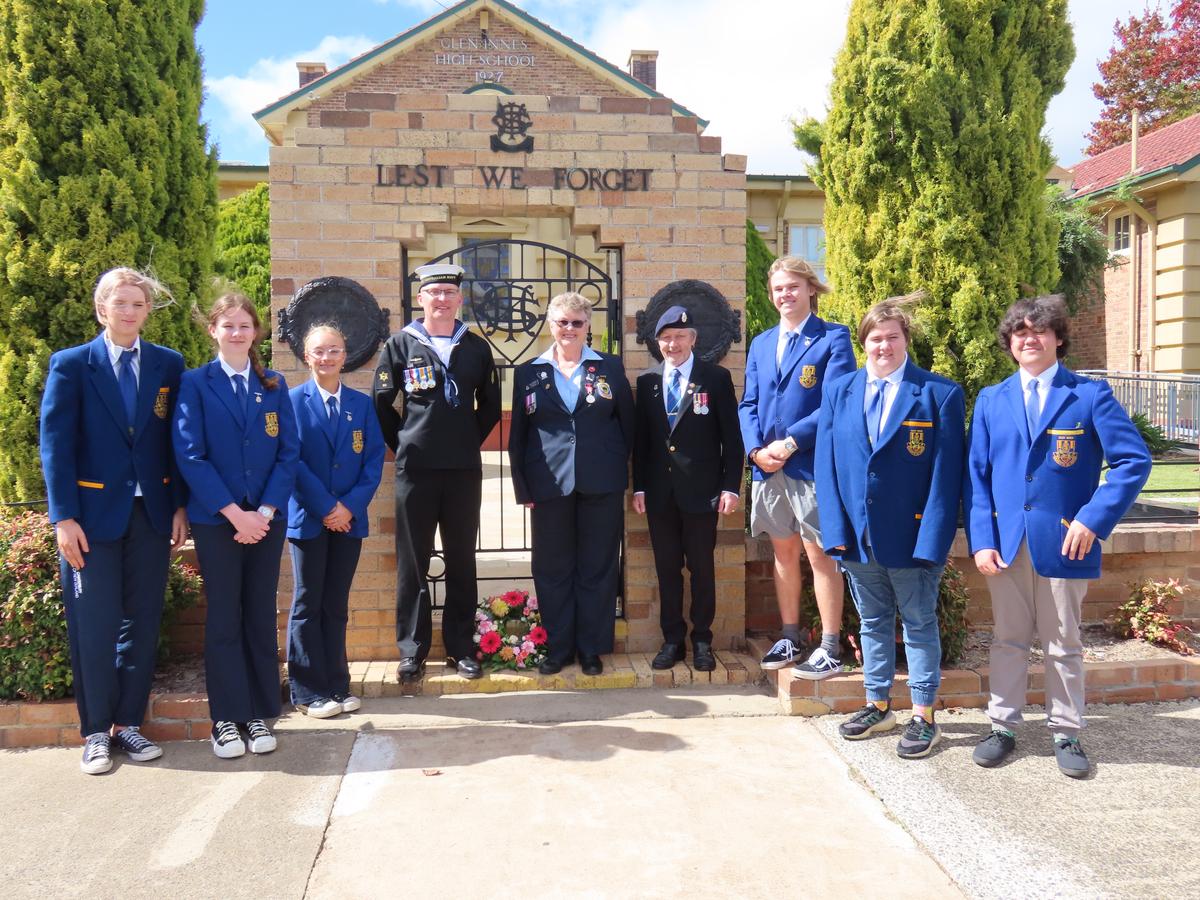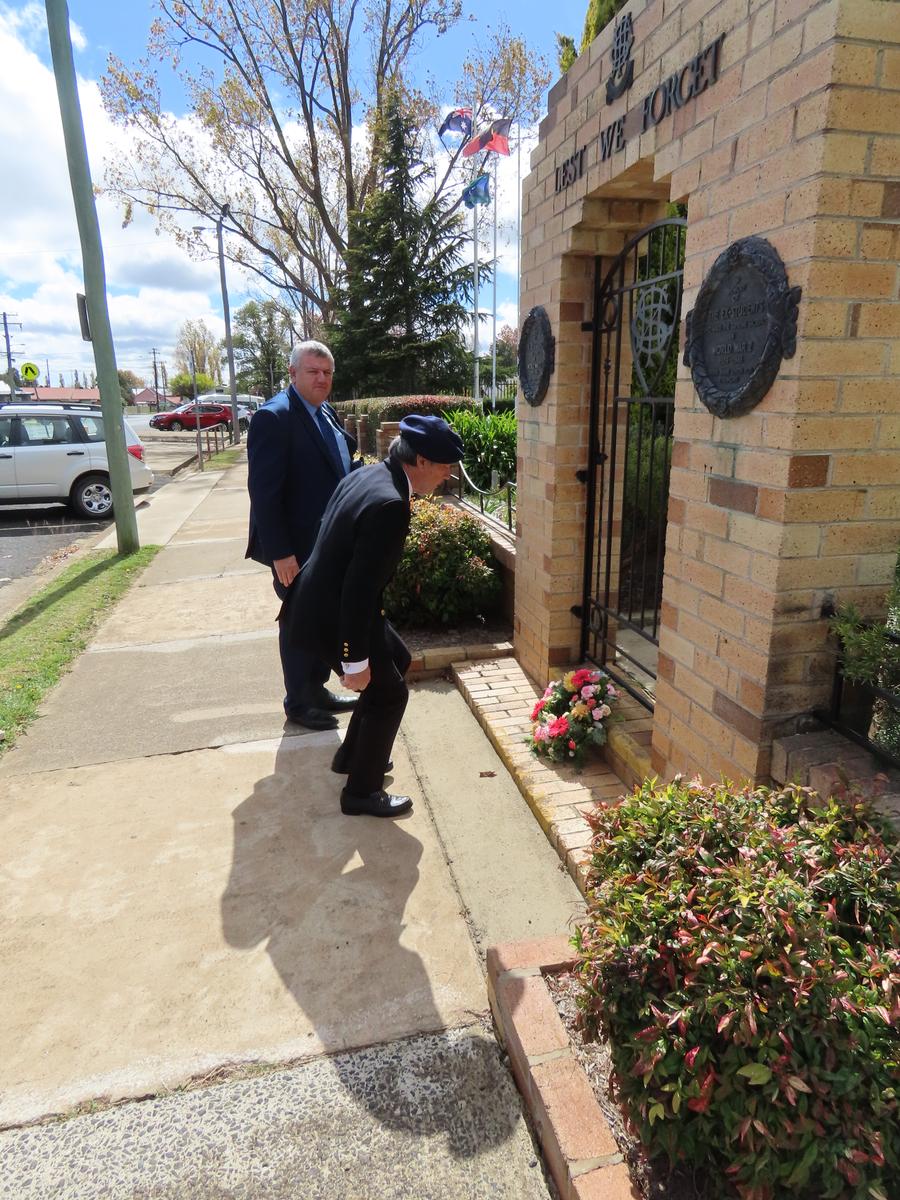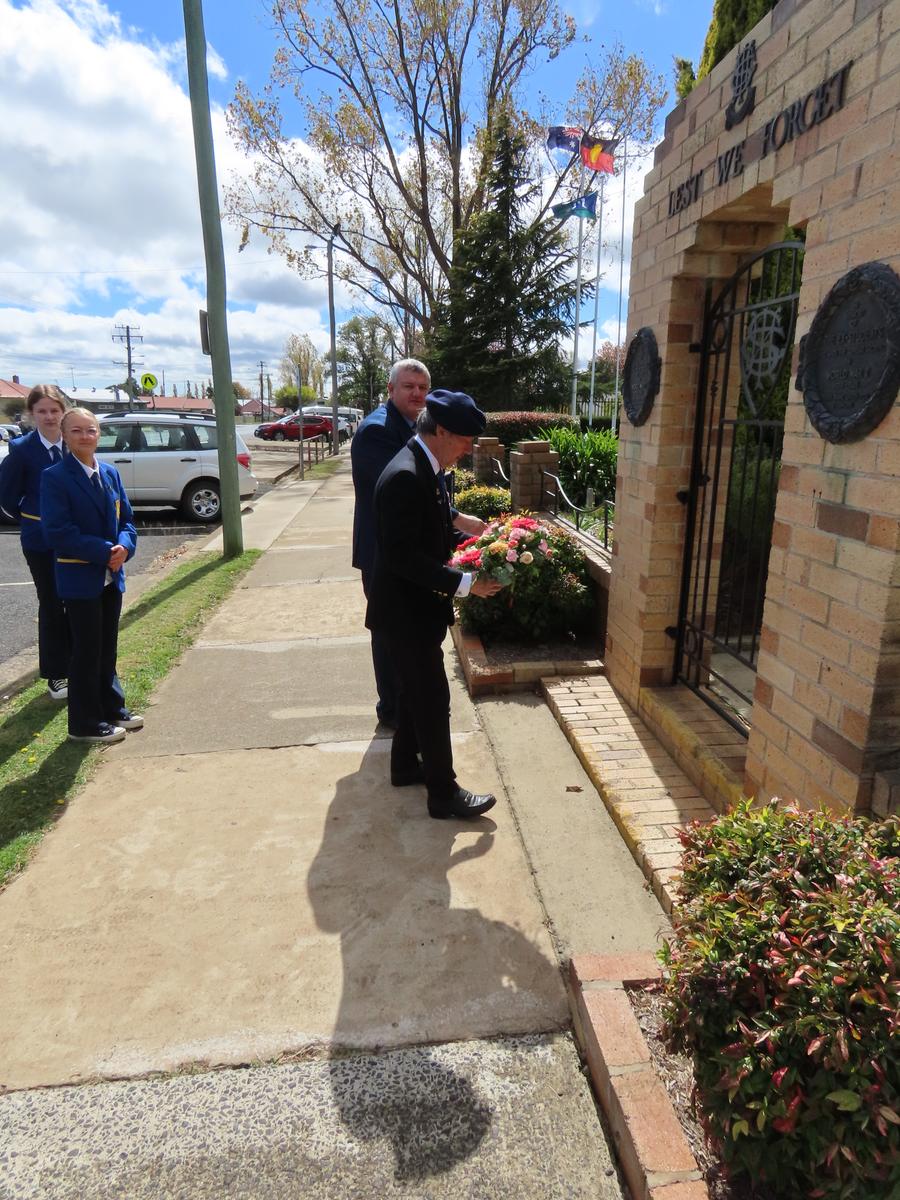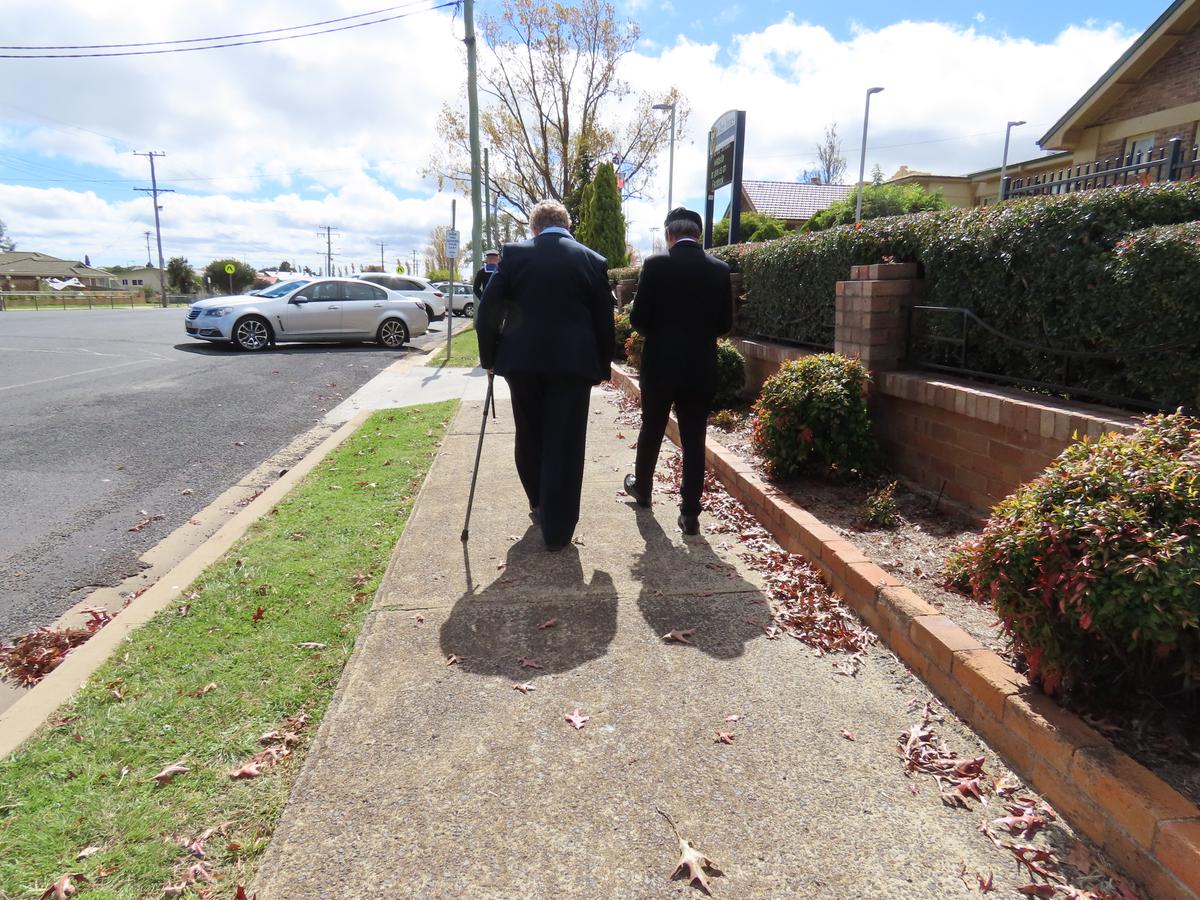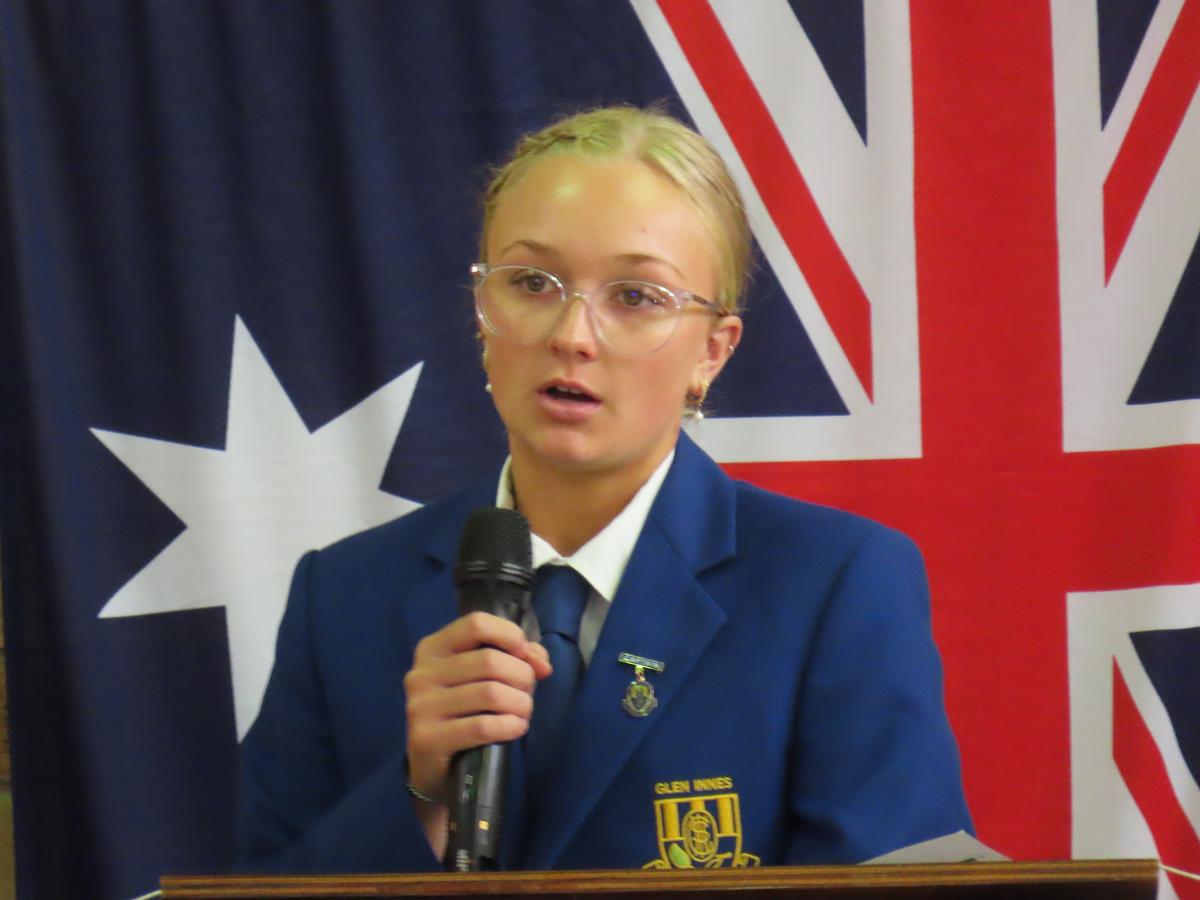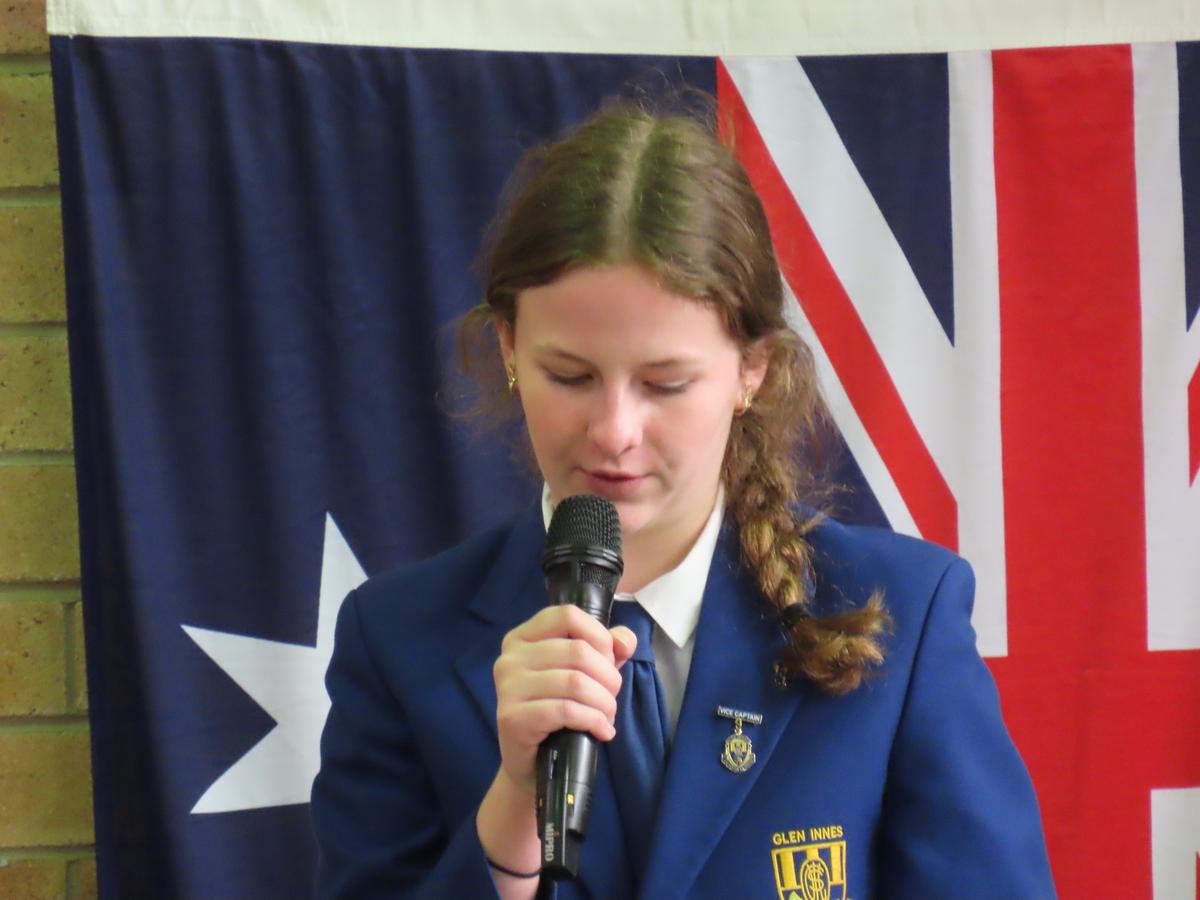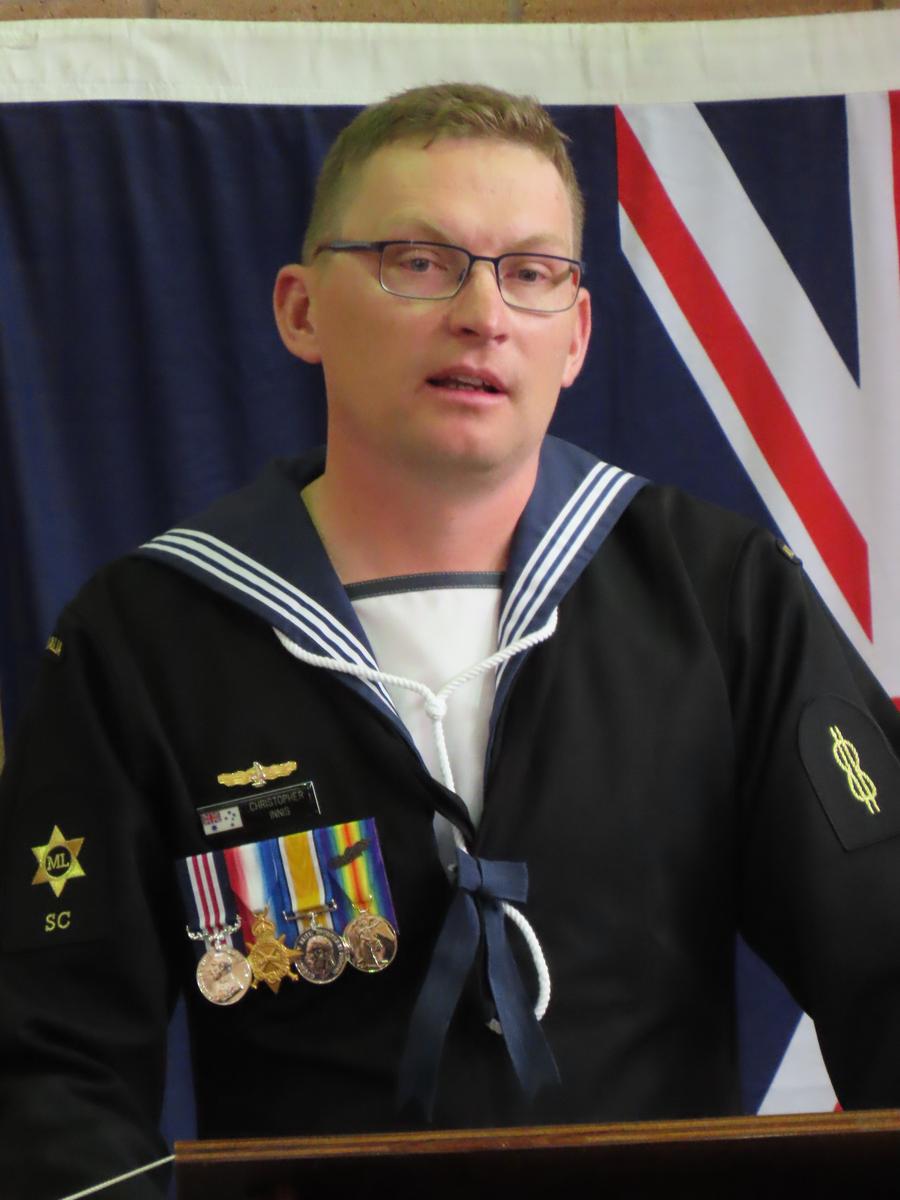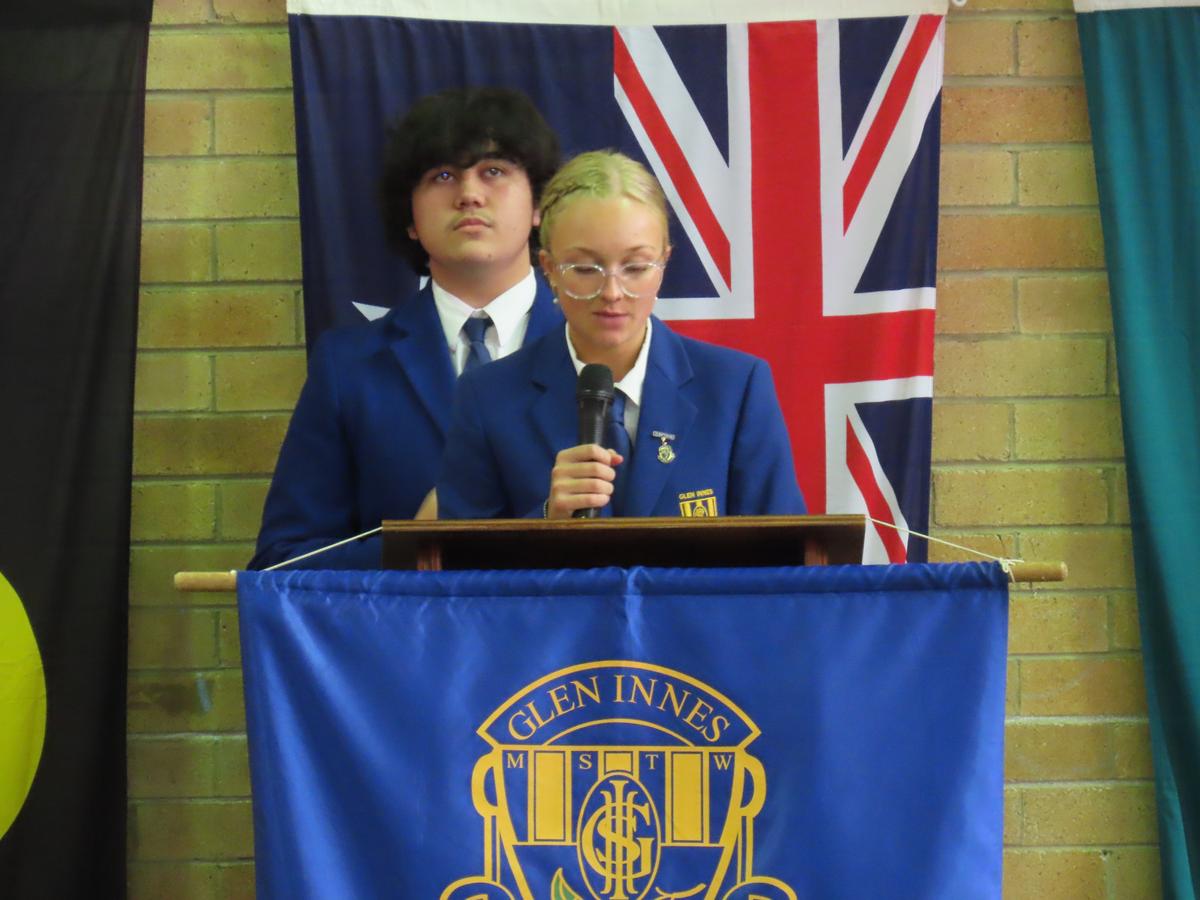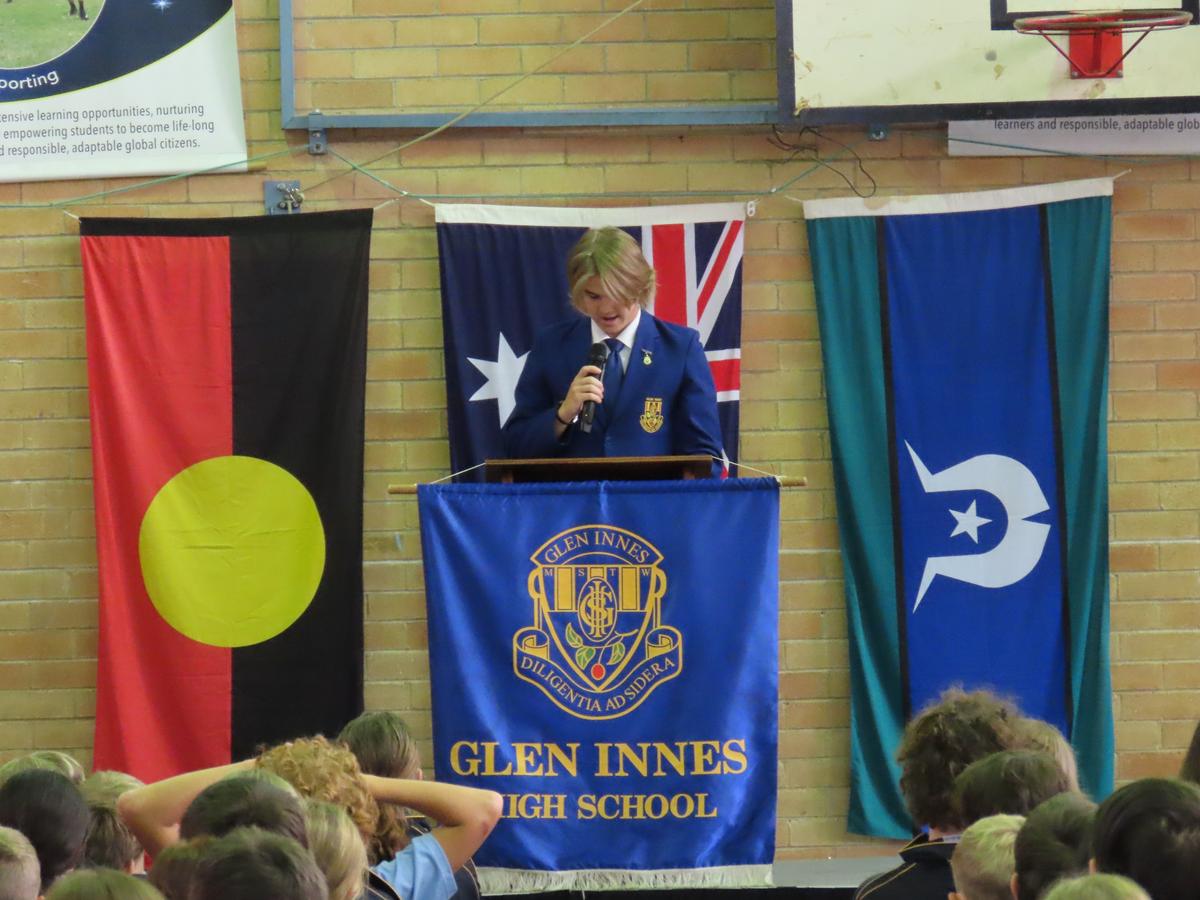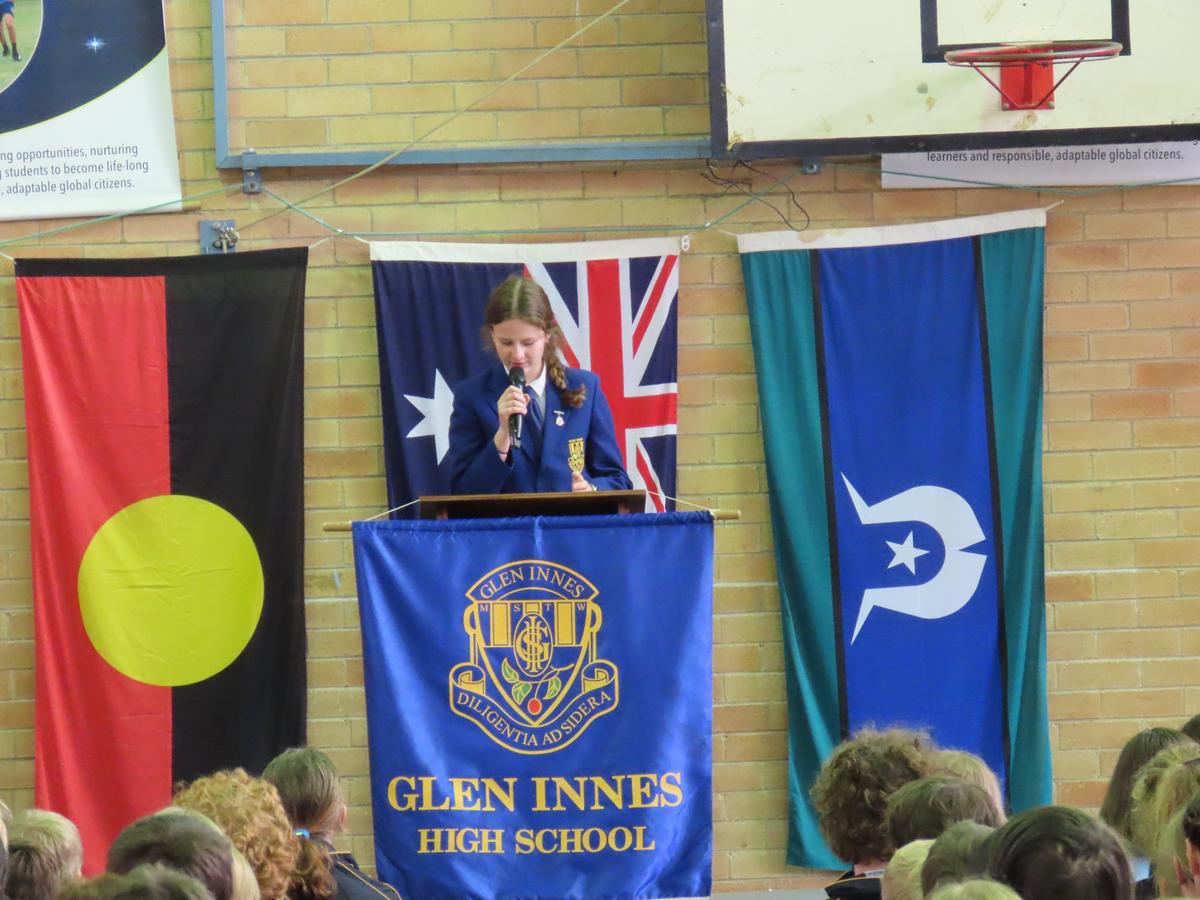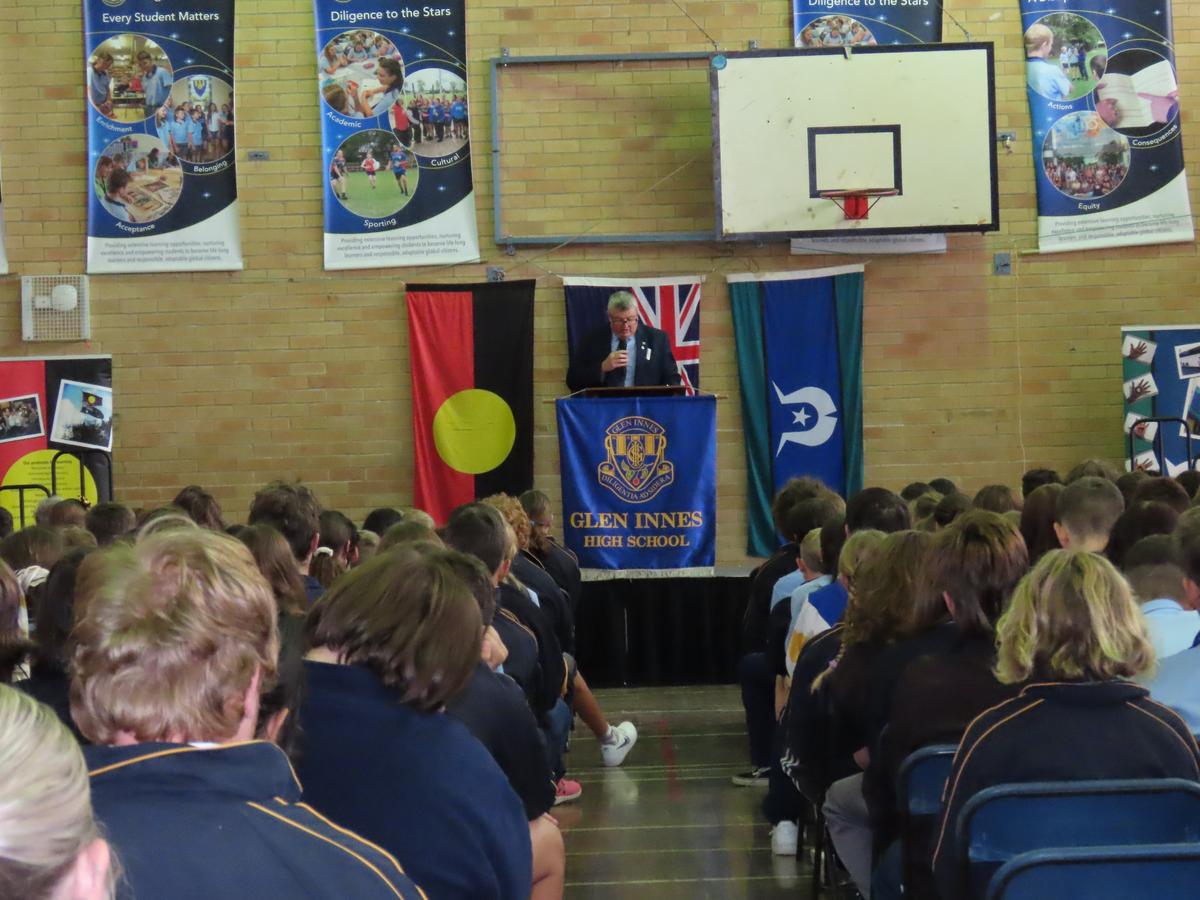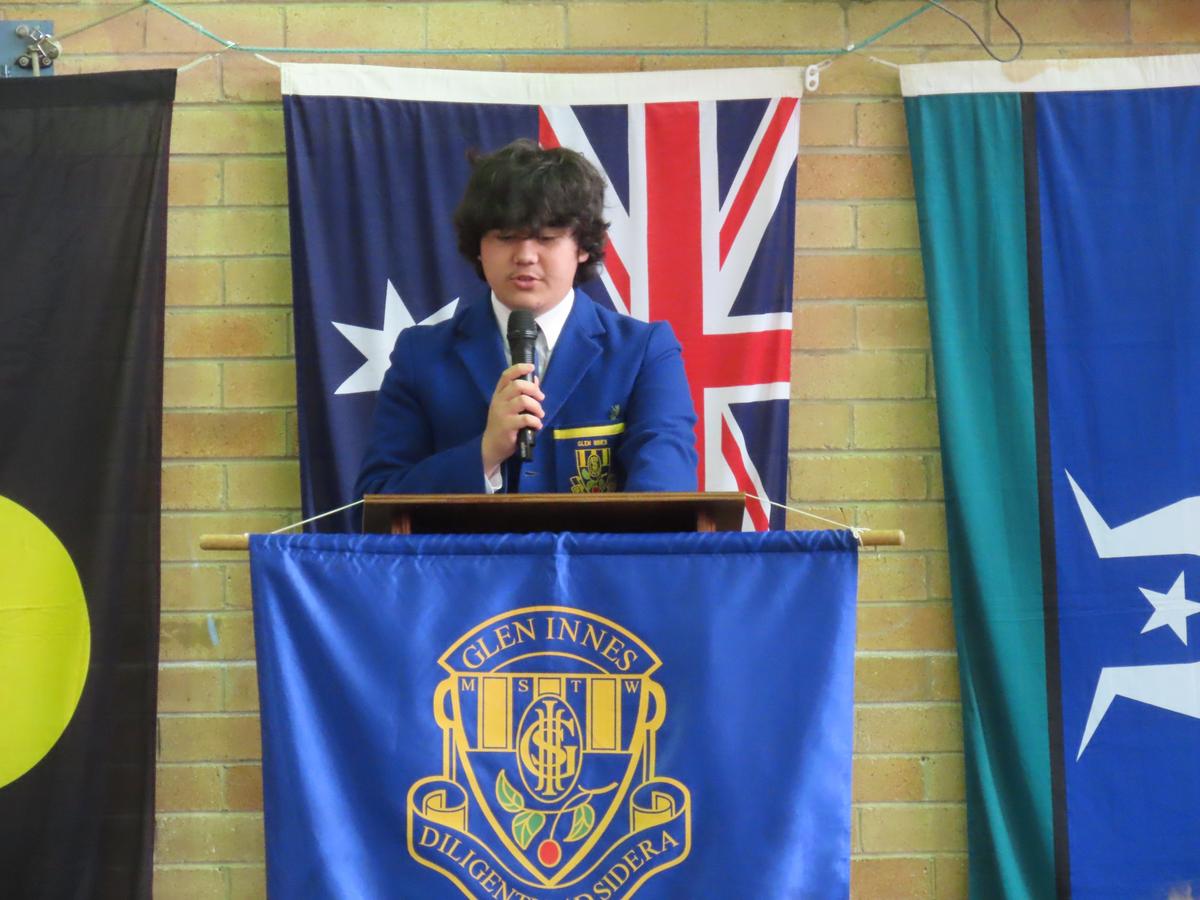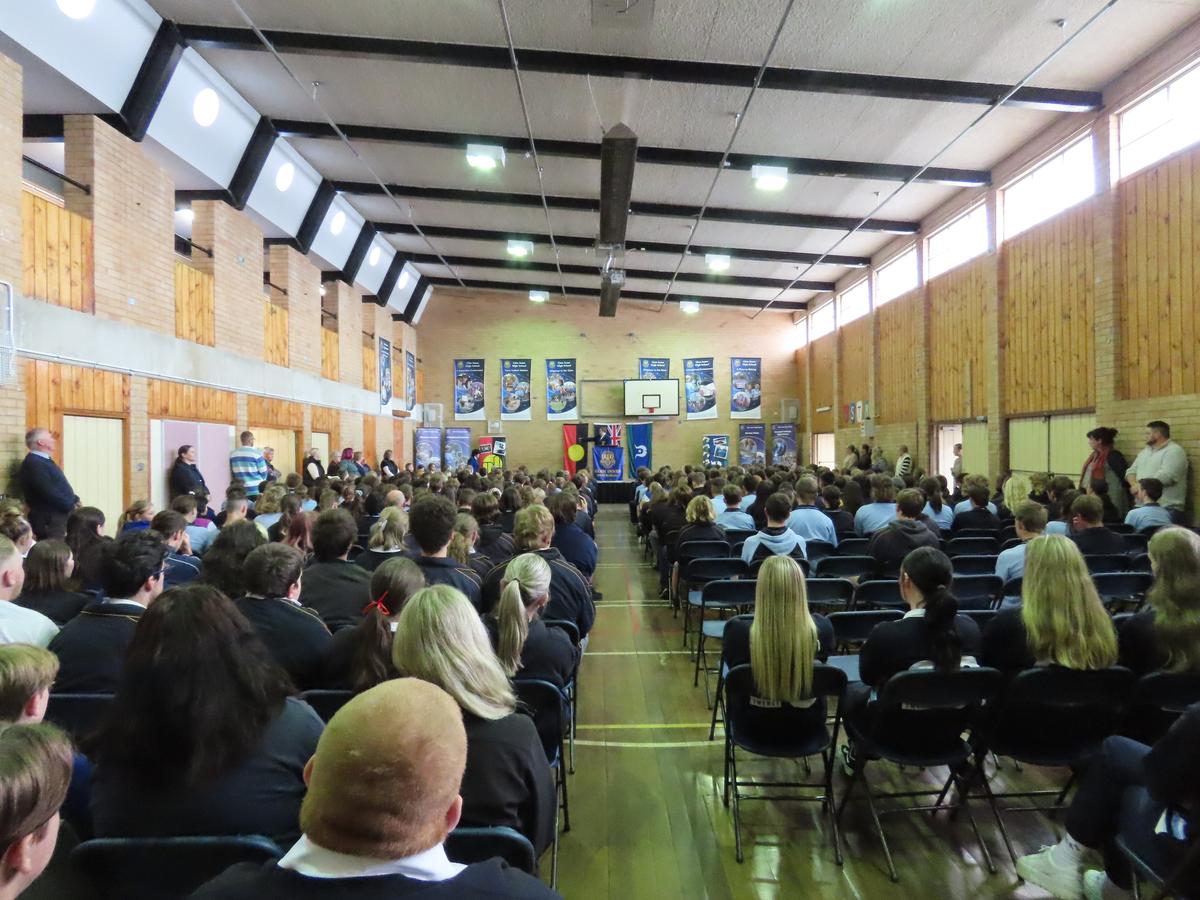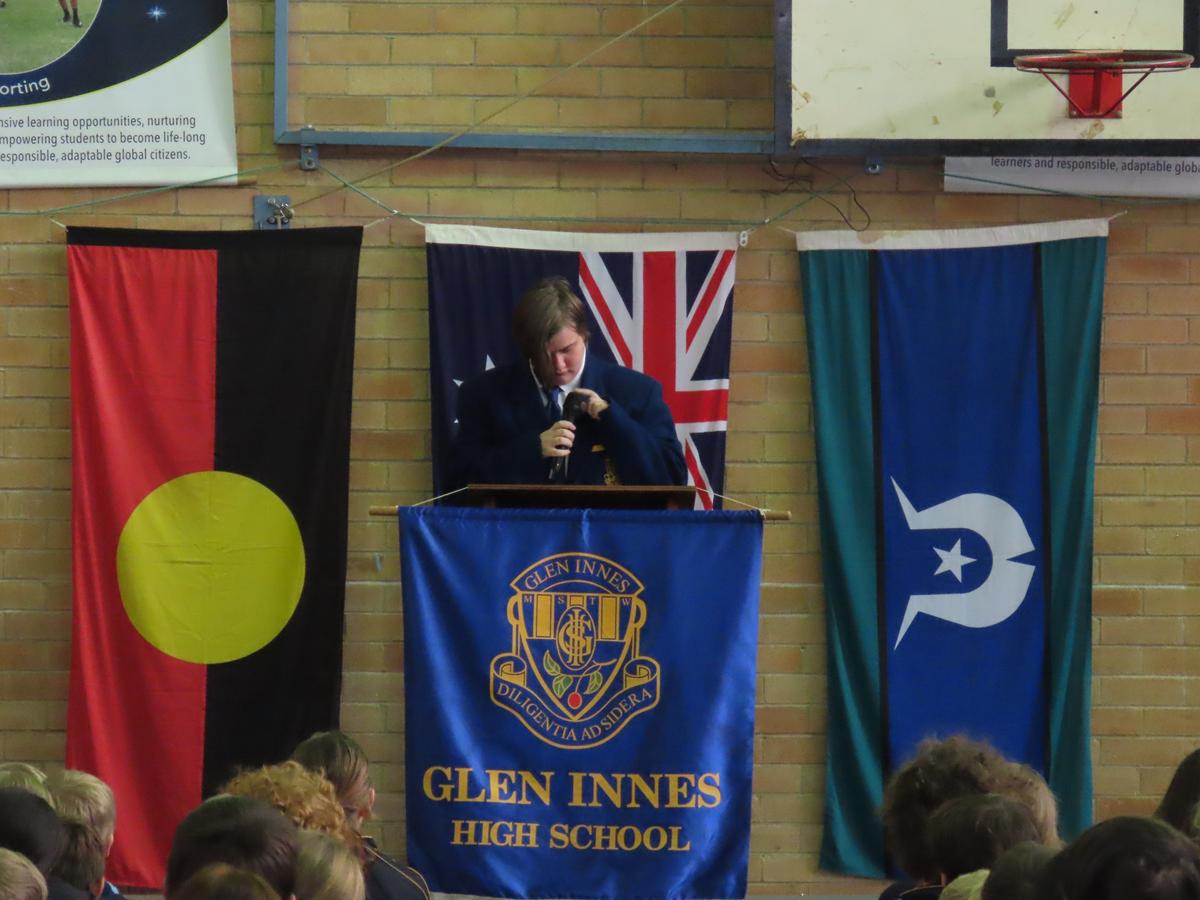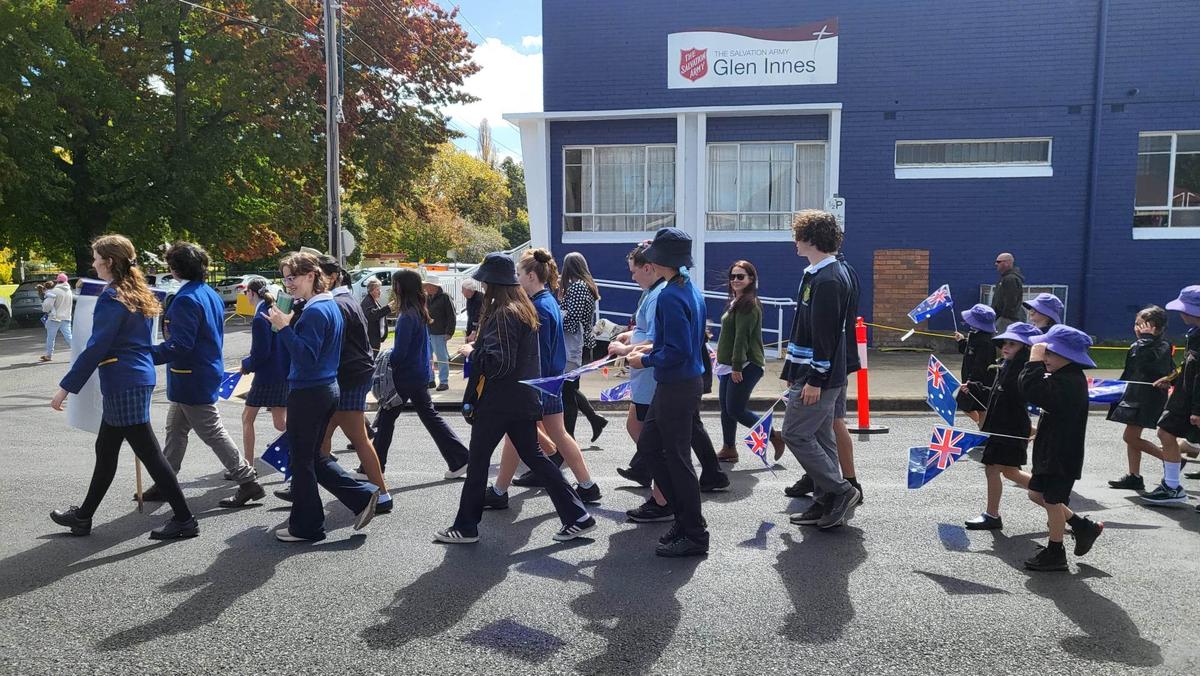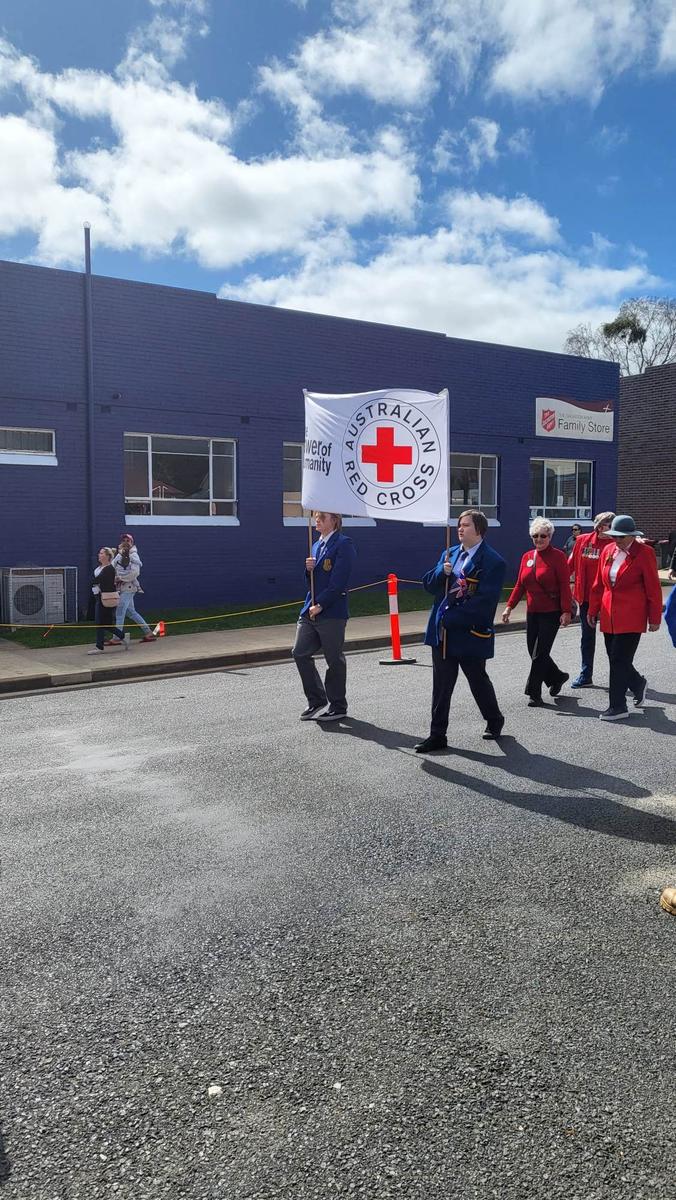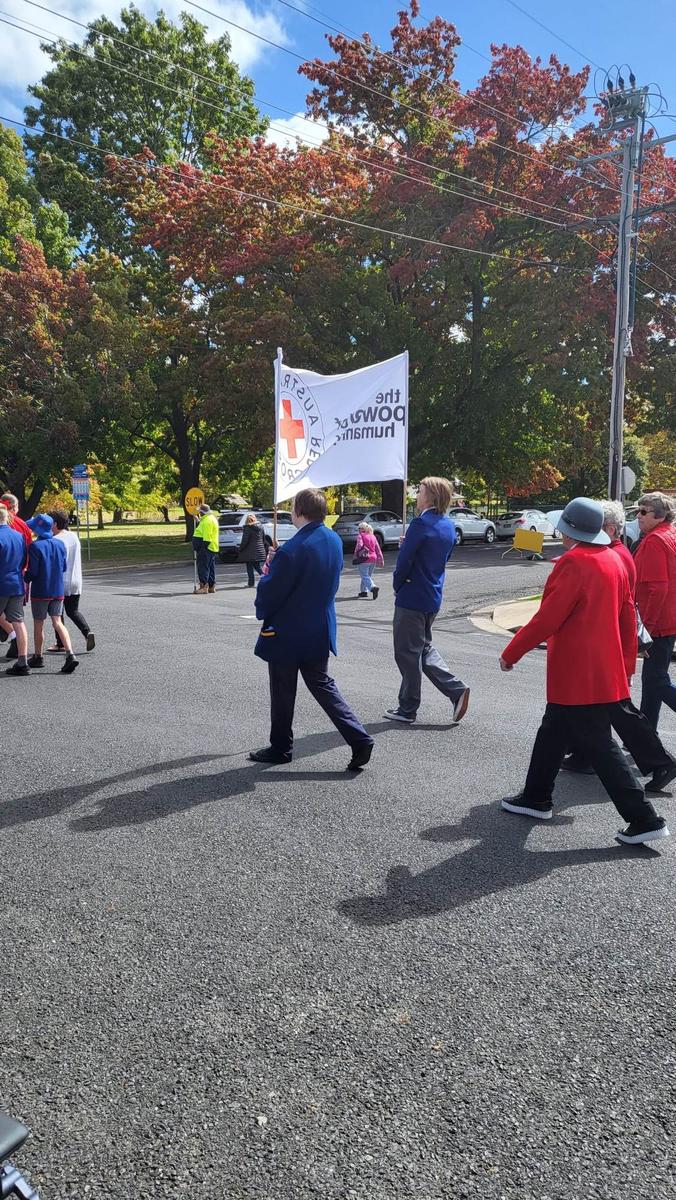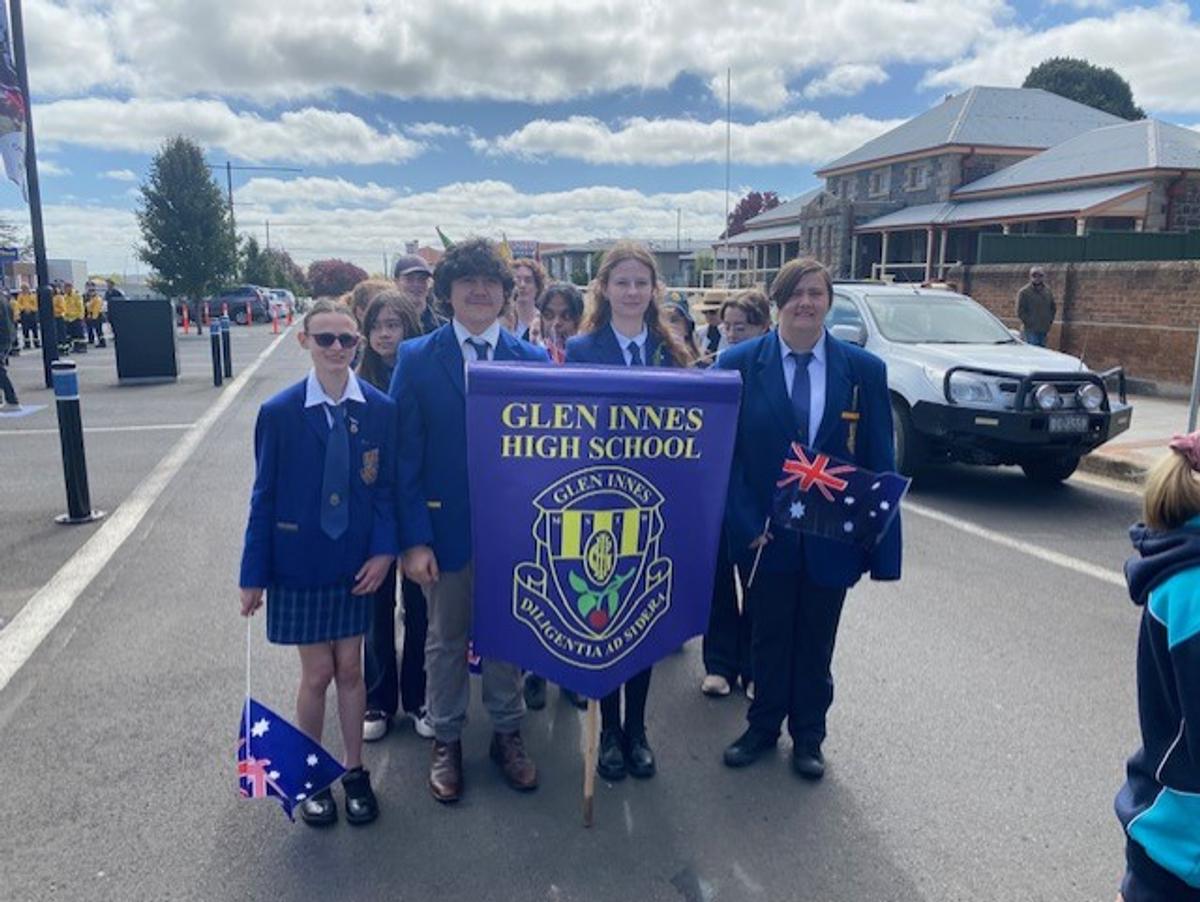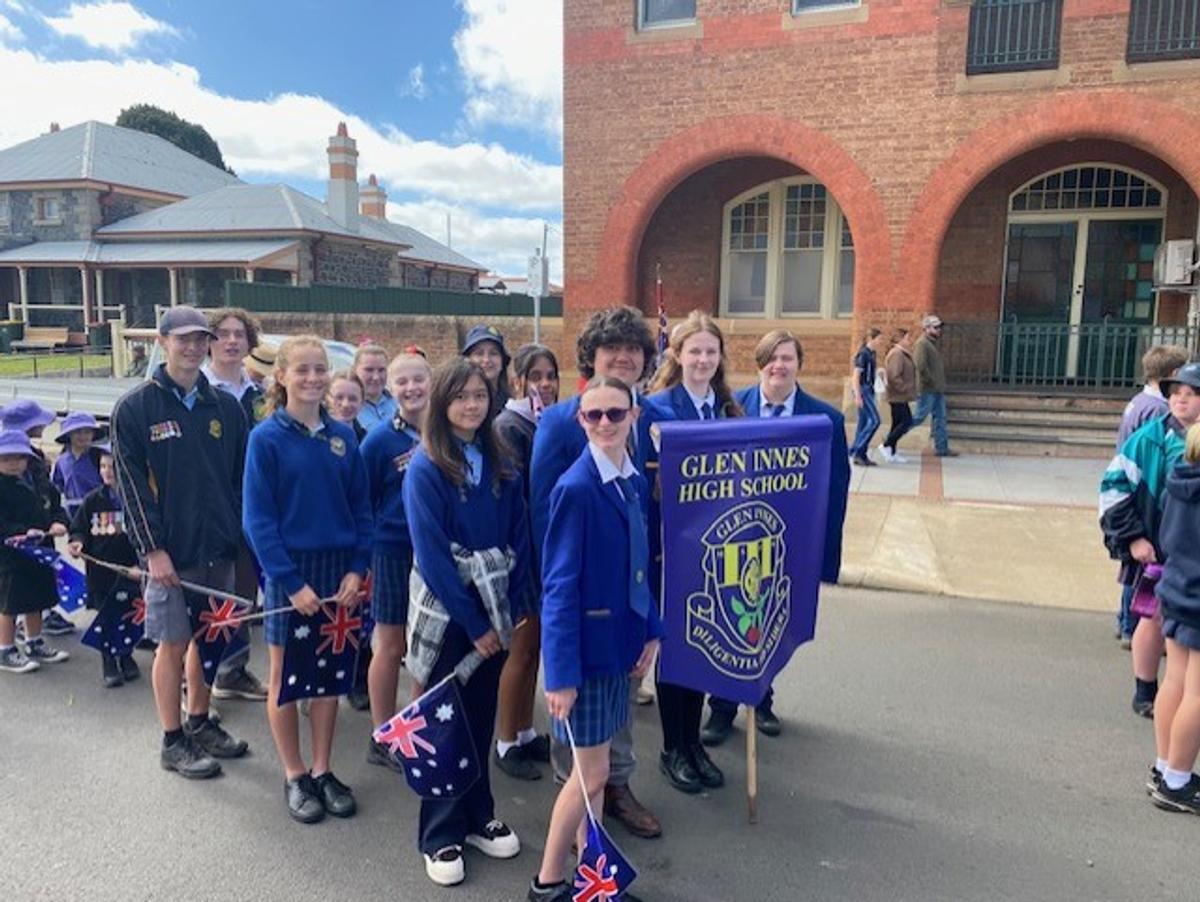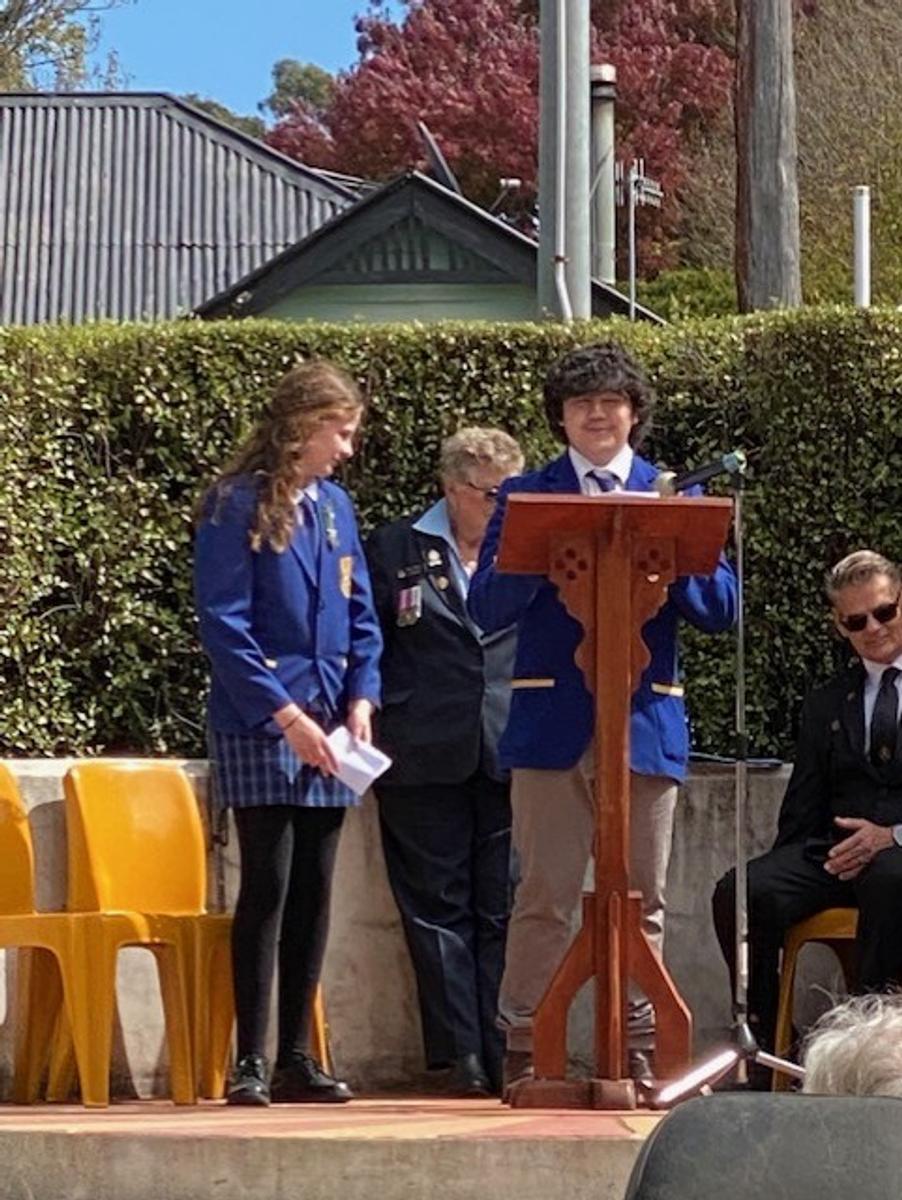ANZAC Day
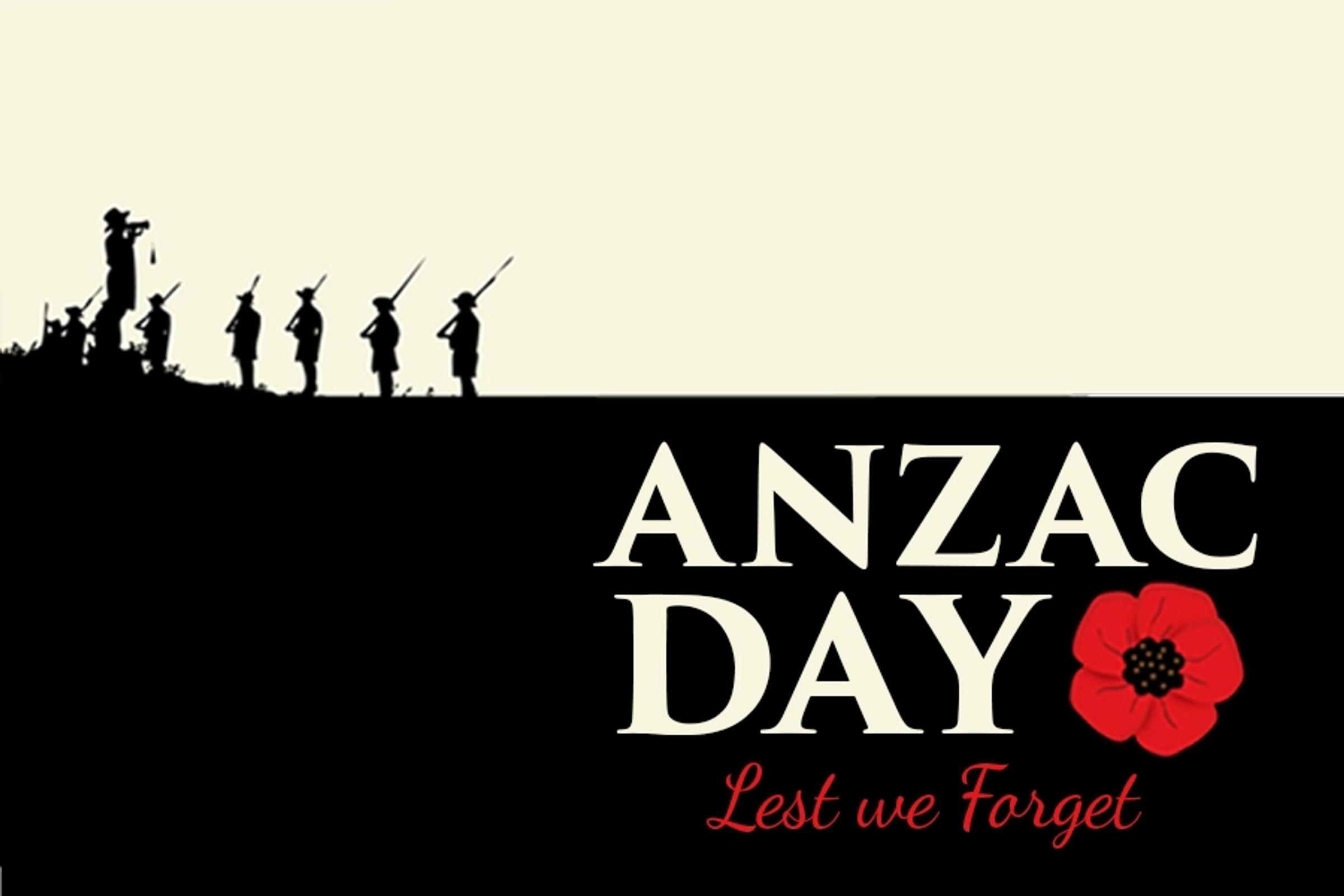
We would like to thank our School Captain, John Crossley, and our Vice School Captain, Abigail Lightfoot, for their wonderful speeches at the ceremony. We would also like to thank our staff and students who attended and marched with our school. It was great to see all students who attended in full school uniform.
On Wednesday, 27 April we held our school ceremony. We would like to thank our special guest for attending and our school leadership team for running the event. A special thank you to Mr Norm Cowan for all his organisation.
We would like to share some of our students' work regarding ANZAC.
Connor Beehag, Year 11
WHY DO AUSTRALIANS REMEMBER FORMER WARS?: The ANZACs fought in Europe and Asia. One million soldiers were split in half with 500,000 in Europe and 500,000 in Asia. They travelled through the rough seas to confront the plague, which was the Axis. Australian and New Zealander people like to remember the war because of the sacrifice of the ANZACs. A lot of people's families served in WW1, WW2, Vietnam and the Korean War. We wouldn't have what we have today if it wasn't for the soldiers who served. The wars weren't our doing, but we still supported our allies.
"If I had to take hell, I would use the Australians to take it and the
New Zealanders to hold it." - Erwin Rommel
Angus Templeton, Year 7
Australians still try to remember wars, so we can stop wars from happening in the future.
Edith Newbury, Year 11
Edith did a wonderful researched speech regarding the contribution of her Great Grandfathers to WWII at the local ANZAC ceremony. Please enjoy!
During World War Two, all four of my Great Grandfathers served for Australia. Alan Judge, Thomas James Camron and Patrick David Newberry entered the war under conscription while Kenneth Dolph Jones enlisted at the age of 16. Patrick had the opportunity to waver his conscription as a primary producer, however, felt it was his duty to serve to protect his family, land and country. The war was mostly unspoken about by my Great Grandfathers to their families, however, among the few stories told is one about Ken Jones in Timor. Ken grew up with eight siblings on his family’s sheep properties ‘Bandalong’ and ‘Cadow’ located on the Lachlan River at Forbes NSW.
On 3rd September 1939, two days after Hitler invaded Poland, Britain & France declared war on Germany and Prime Minister Robert Menzies announced Australia was at war. That was the beginning of WWII. In November 1939 conscription was activated (Defence Act 1903). This meant that all Australian men who met the criteria must join a Defence force.
However, many rural men from around the country who didn’t meet the criteria also wanted to join the armed forces to protect their country from invasion. They could volunteer but they had to be 18 yrs old. Ken was only 16 yrs old and because he was from a very well-known family everyone in the Forbes district knew his age. His parents didn’t want him to go into the army but He was determined, so he convinced a mate to ride their push bikes 470 kms to Tamworth where nobody knew them so that Ken could lie about his age and successfully enlist in the army! The bike ride took them two weeks.
Ken was enlisted in a Perth-based Unit and he was sent to the Infantry Training Centre Camp at Darby River, Wilsons Promontory, Victoria. On completion of this training in early 1941 only 1 third of the men were selected to become part of Australia’s first elite, specialist guerrilla warfare unit as a commando, the 2nd Independent Company which later became the 2/2nd Commando Squadron. They were issued with British uniforms, not Australian ones. Lieutenant-General Strudee set the Commando selection criteria: ‘They are to be highly trained, of outstanding intelligence and physical fitness and possess high individual initiative. Each soldier will be trained to accept responsibilities far in excess of his rank and to fend for himself under the most severe conditions.’
Ken’s army nickname was ‘Bluey’. Their Company was sent north to Katherine, Northern Territory, where they were stationed patrolling our northern coastline until Japan entered the war following the attack on Pearl Harbor in 1941.
With fears of a Japanese invasion of Australia, No 2 Independent Company was sent to the island of Timor, as part of Sparrow Force where they played a major role in the Battle of Timor. They arrived on 17th December 1941 where they were to keep the Japanese forces away from the capital Dilli, especially the airfields. The Japanese invaded Timor in February 1942 and were attacked by the Australians who lay in wait. However, the Australian forces were severely outnumbered, 270:8000 men! They were not expecting 8000 Japanese troops! So, they were forced to retreat to the rugged mountains where they waged a guerrilla campaign against the Japanese who were sent to eliminate them. There were many bloody battles as Timor was divided into Dutch Timor (in the West, who supported the Japanese) and Portuguese Timor (in the East, who supported Australia) so it was a very volatile situation especially as there were West Timorese fighting East Timorese while the Australians were fighting the Japanese.
After the fall of the island, Ken’s commandos became separated by the huge Japanese army. Very quickly the commandos showed they were extremely efficient and could outperform forces many times their size, however for over a year their health suffered from lack of regular food. Ken said his men would not have survived in Timor if it hadn’t been for the incredible loyalty and support they got from the Portuguese-Timorese people. They kept them informed about the whereabouts of Japanese soldiers and about local traitors not to trust. Many Australian soldiers were badly affected by huge, weeping tropical ulcers, typhoid fever and malaria. The Timorese brought them food, local medicines and taught them the bush foods that were edible and those that were poisonous. They lived in rough hideouts in the tropical mountains often finding shelter from the rain and cold in caves. They survived mostly on green coconuts, especially the juice, supplemented by food brought by the Timorese natives. Ken told of some horror stories about finding villages destroyed by Japanese soldiers, He said those horrible sights were some that never left him. His best mate was killed in an ambush while fighting by his side.
For a year Ken’s small Commando Company kept a Japanese force of 20,000 men occupied and unavailable to fight elsewhere, preventing them from invading Australia. During one battle they lost their radio so couldn’t maintain communication with Australia. During this time the Australian Government believed that No. 2 Independent Company had been captured and for 6 months the unit was officially listed as missing by the Australian Army, believed killed in action. They were eventually able to collect enough scraps and old batteries to make another radio, however unbeknown to them, the Australian Government had changed the communication signals so they were not able to make contact. With no way to charge them, the batteries eventually went flat. It was only because of the ingenious mind of their signalman, ‘Happy’ Greenhault (from Maclean, NSW) who made a generator from scraps. He rigged the battery up to the generator, by hooking it up with a rope attached to the wheel of a bike, that a native brought from a destroyed village. The soldiers and natives took turns cycling the bike, that powered the generator and charged the battery enough to use the radio. ‘Happy’ worked tirelessly until he made contact with the Australian mainland – a pastoralist in NT who reported to the Army that most of 2/2nd was still alive.
In December 1942 ‘Happy’ made contact with a Portuguese cargo ship close to East Timor and convinced the Captain to let the Australian soldiers swim to his ship and get on board. The Commandos had to break through Japanese lines near the beach before they could swim about 1 km to the ship, as it was too large to come closer to the beach. Sadly, they didn’t all make it because as they swam they were under heavy Japanese fire until they reached the ship and climbed the ladders. The surviving members of Ken’s Commando Company were forever grateful and credited ‘Happy’ for their remarkable escape.
Ken’s parents received a telegram from the Army saying that Ken was missing, believed killed in action. They were distraught of course and much later when Ken came home, his mother thought she was seeing a ghost and became hysterical! His parents did not receive the telegram that said he had been found!
After their rescue, Ken and other survivors had some recovery leave in Australia. They were soon sent back to active duty where he later served in New Guinea during 1943 – 1944 and in New Britain from 1945 until the end of the war.
Ken returned to his family property ‘Bandalong’ after the war and later took up a Soldiers Settlers block at Edgeroi (called ‘Nurrawallee’).
I am proud to be the descendant of many brave men, who risked their lives to give us the freedom we have today.
